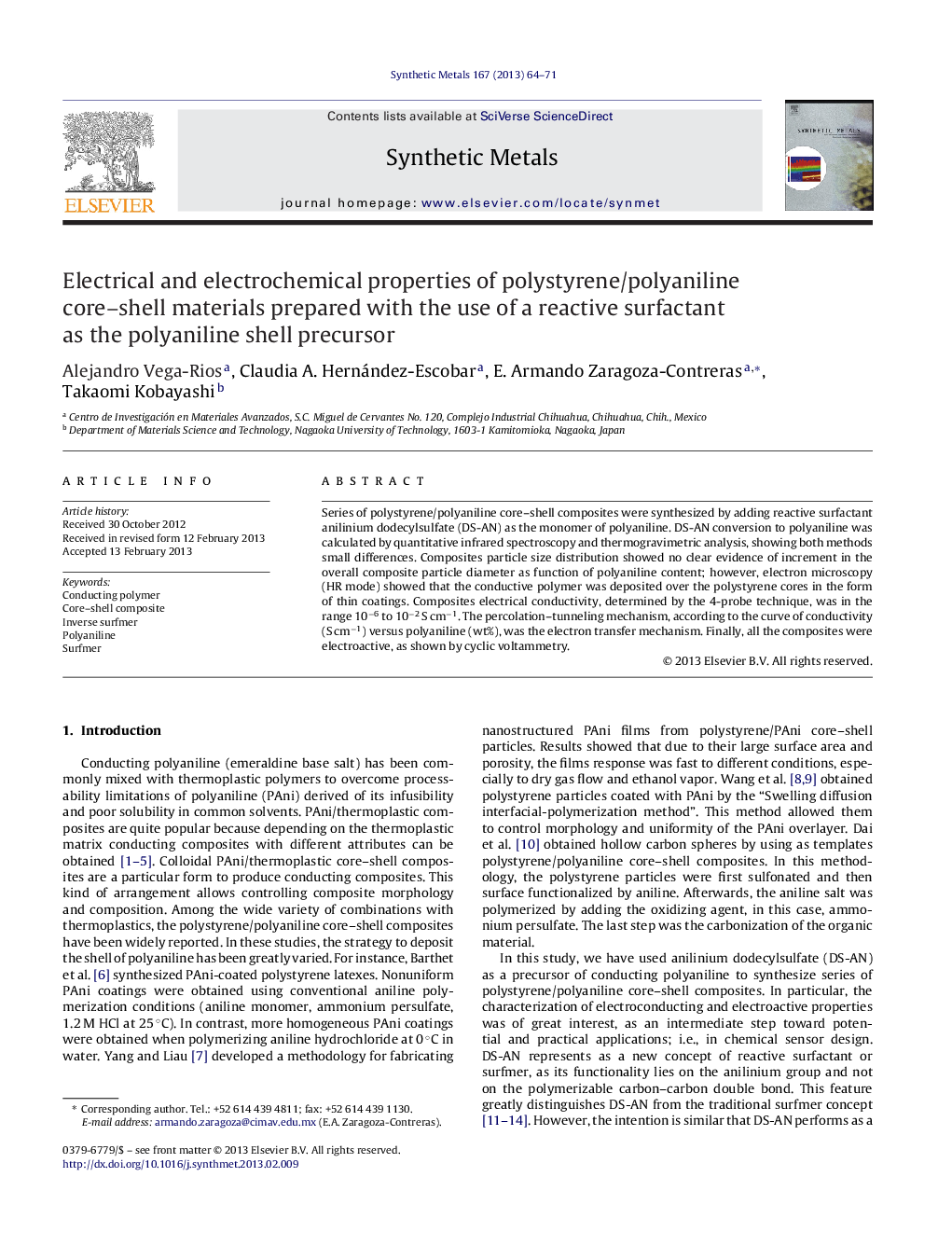| Article ID | Journal | Published Year | Pages | File Type |
|---|---|---|---|---|
| 1441517 | Synthetic Metals | 2013 | 8 Pages |
Series of polystyrene/polyaniline core–shell composites were synthesized by adding reactive surfactant anilinium dodecylsulfate (DS-AN) as the monomer of polyaniline. DS-AN conversion to polyaniline was calculated by quantitative infrared spectroscopy and thermogravimetric analysis, showing both methods small differences. Composites particle size distribution showed no clear evidence of increment in the overall composite particle diameter as function of polyaniline content; however, electron microscopy (HR mode) showed that the conductive polymer was deposited over the polystyrene cores in the form of thin coatings. Composites electrical conductivity, determined by the 4-probe technique, was in the range 10−6 to 10−2 S cm−1. The percolation–tunneling mechanism, according to the curve of conductivity (S cm−1) versus polyaniline (wt%), was the electron transfer mechanism. Finally, all the composites were electroactive, as shown by cyclic voltammetry.
Graphical abstractFigure optionsDownload full-size imageDownload as PowerPoint slideHighlights► Polystyrene/polyaniline core–shell composites were synthesized via a two-step methodology. ► Anilinium dodecylsulfate can be applied as a precursor of conducting polyaniline via an oxidative polymerization. ► The core–shell composites show electrical and electroactive properties. ► Polyaniline shells are deposited in the form of thin coatings on the polystyrene core.
